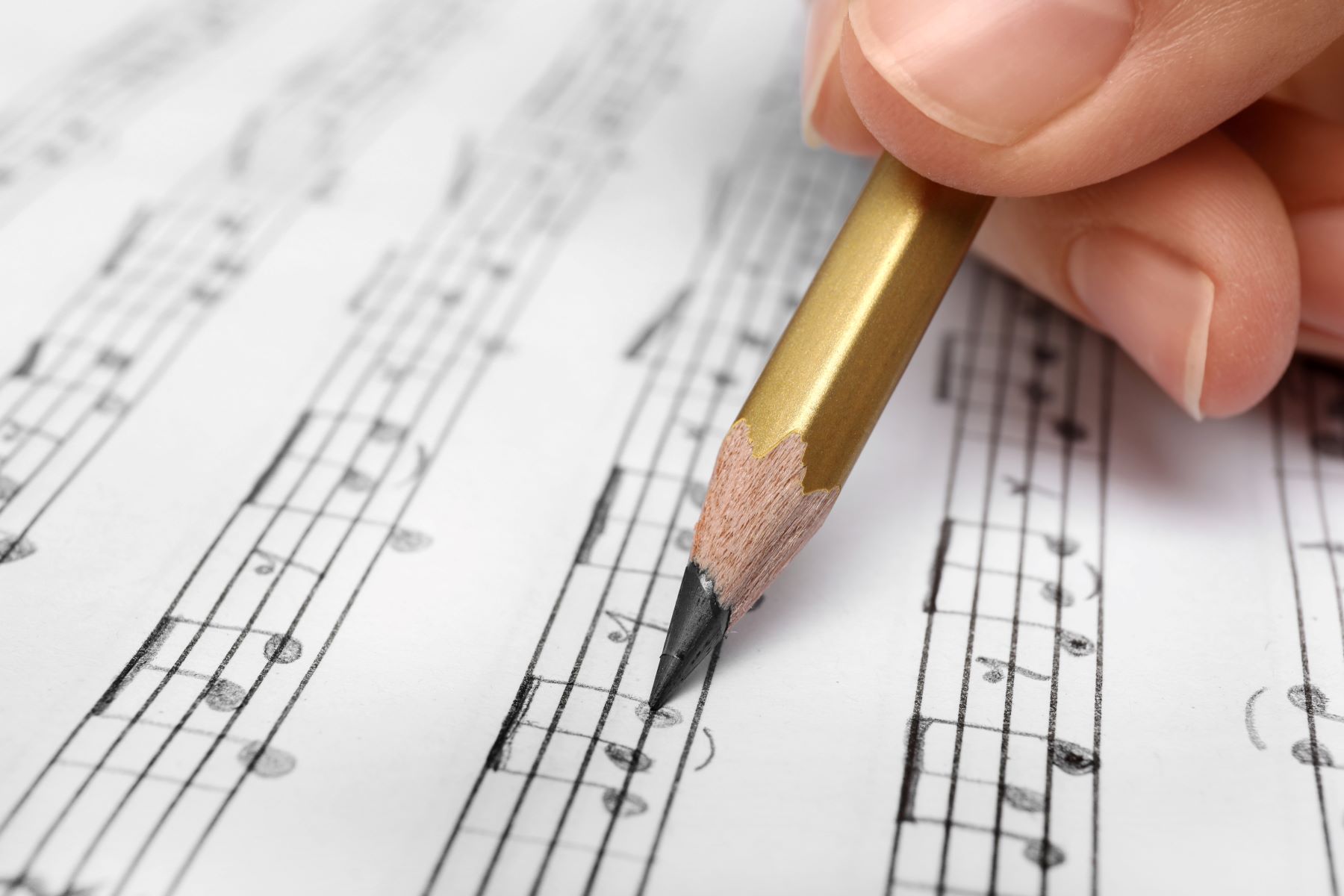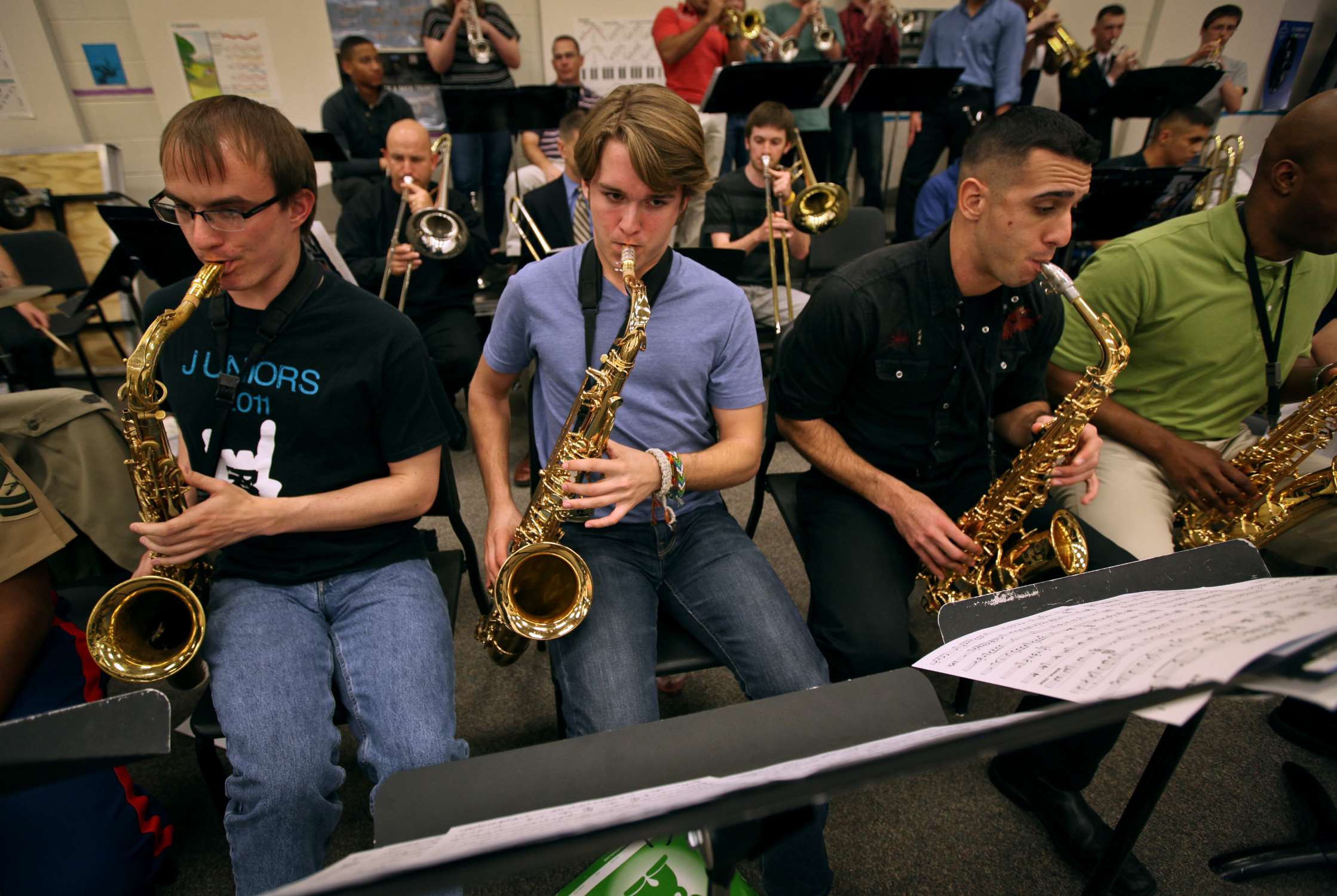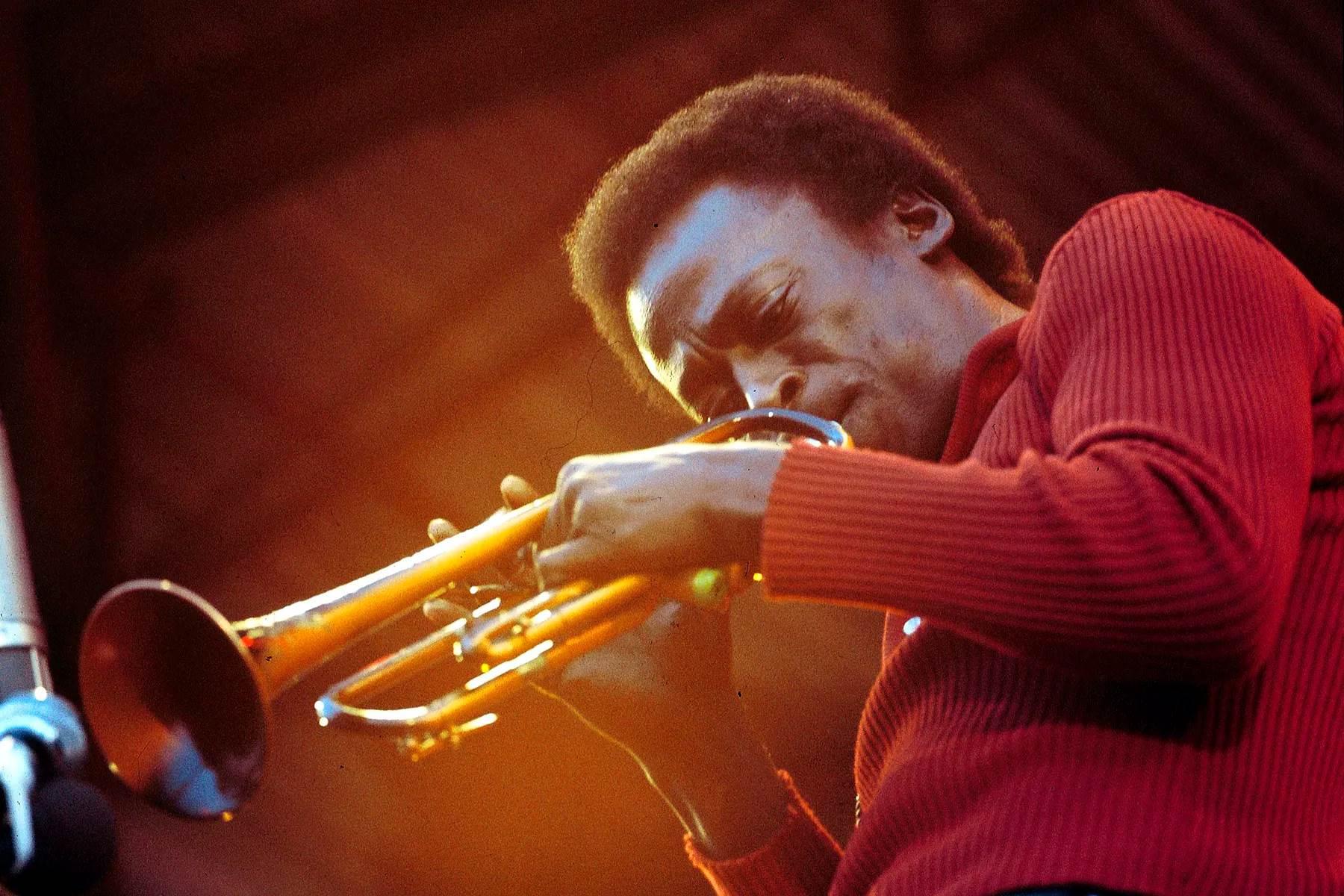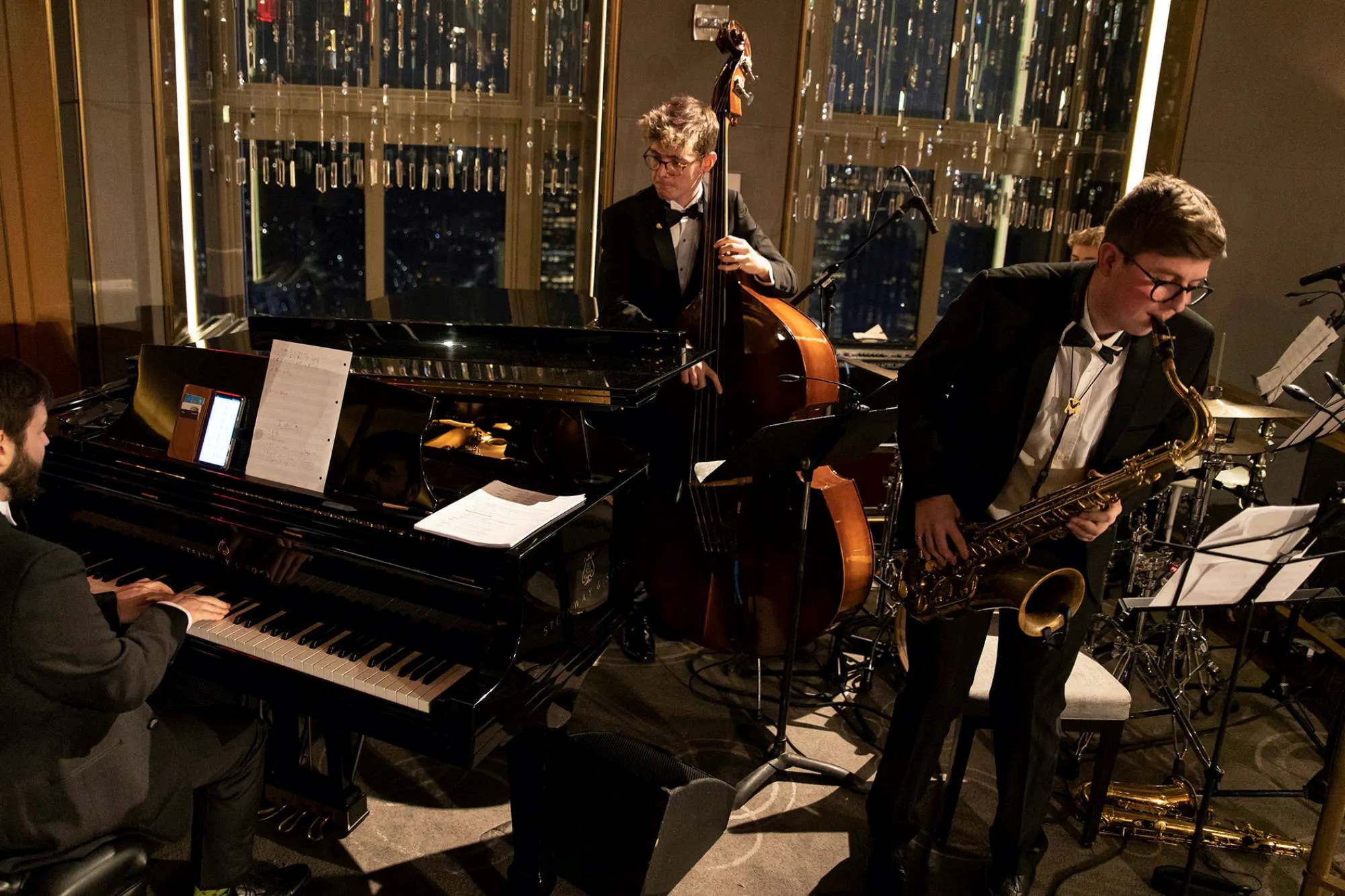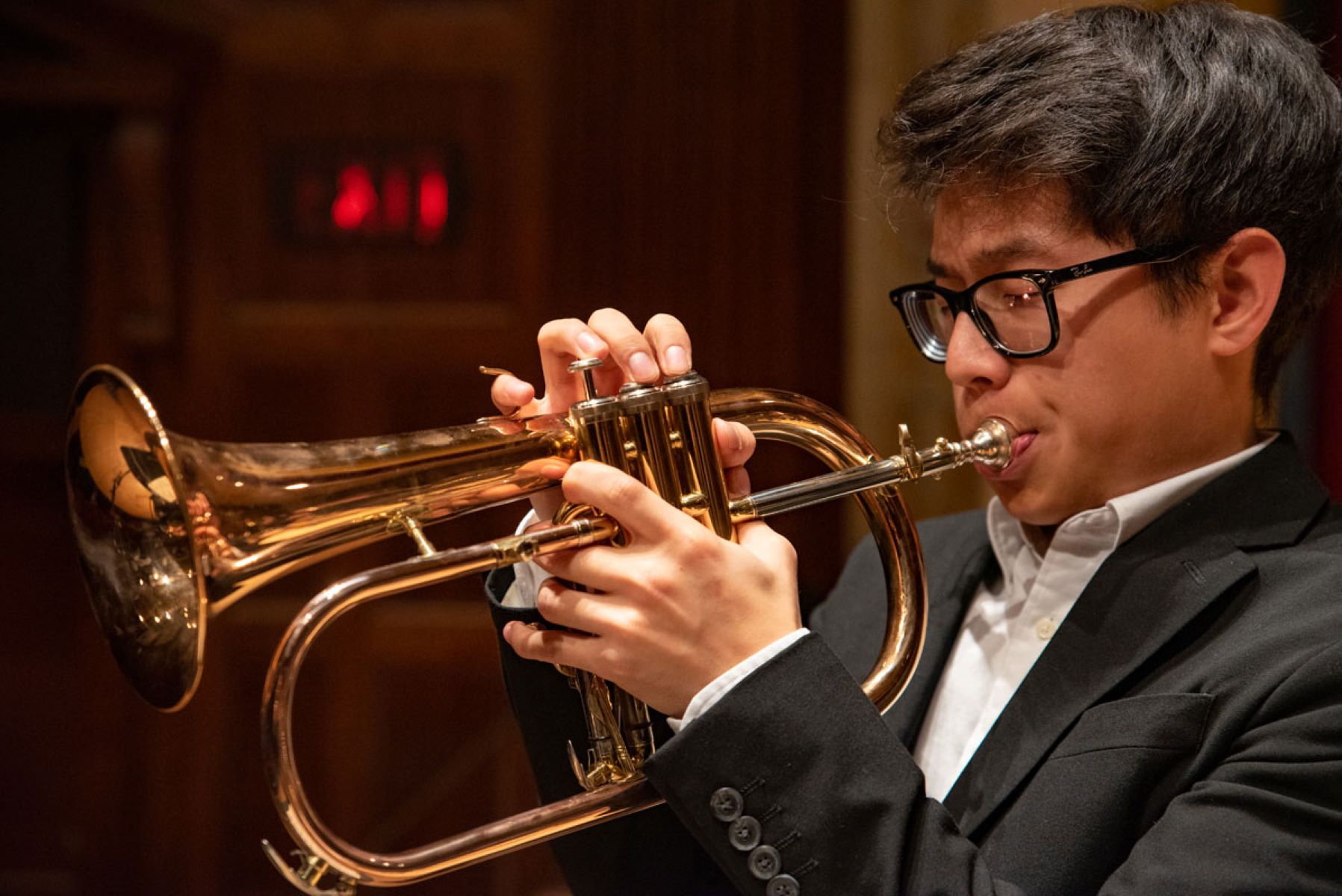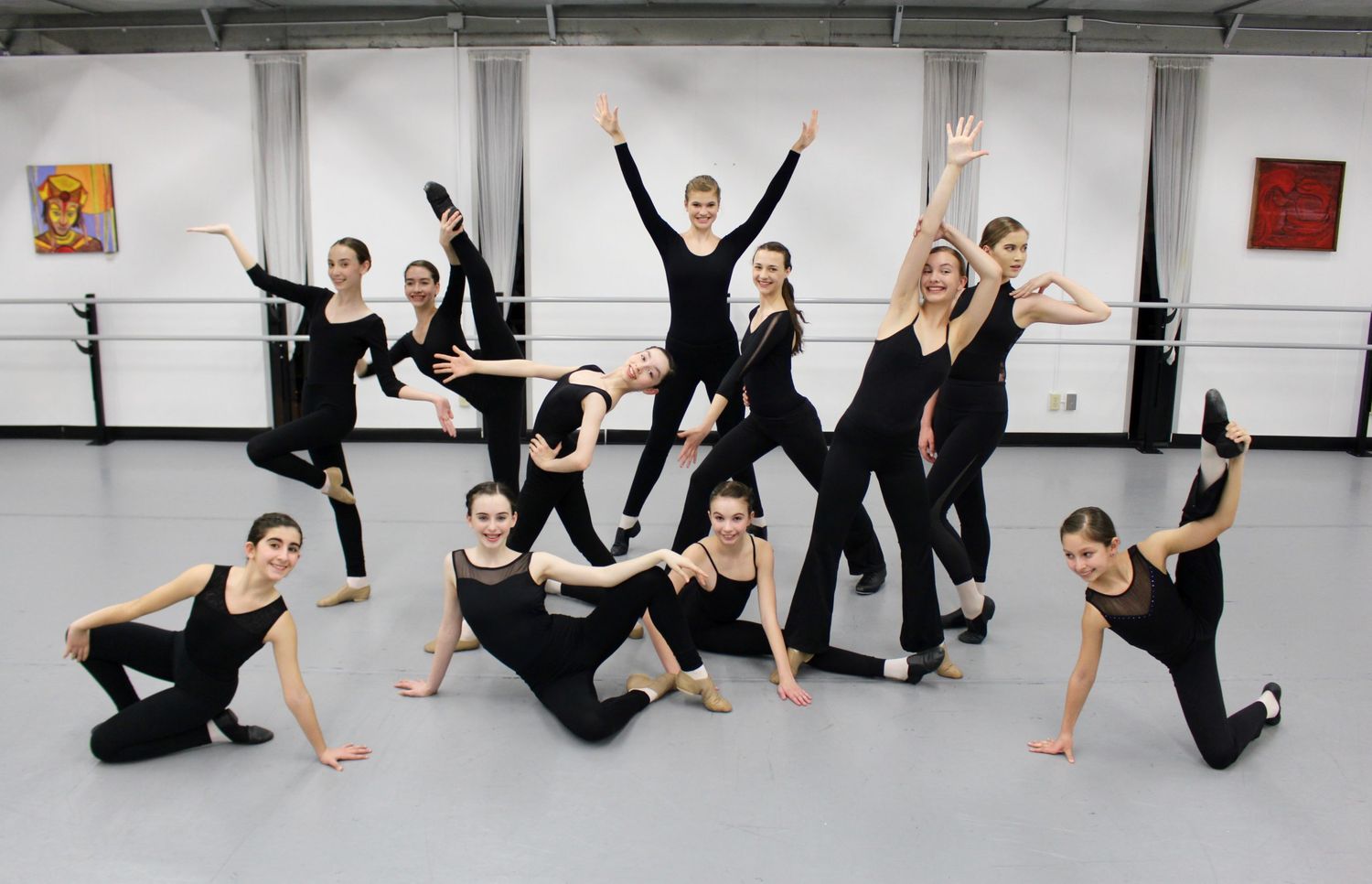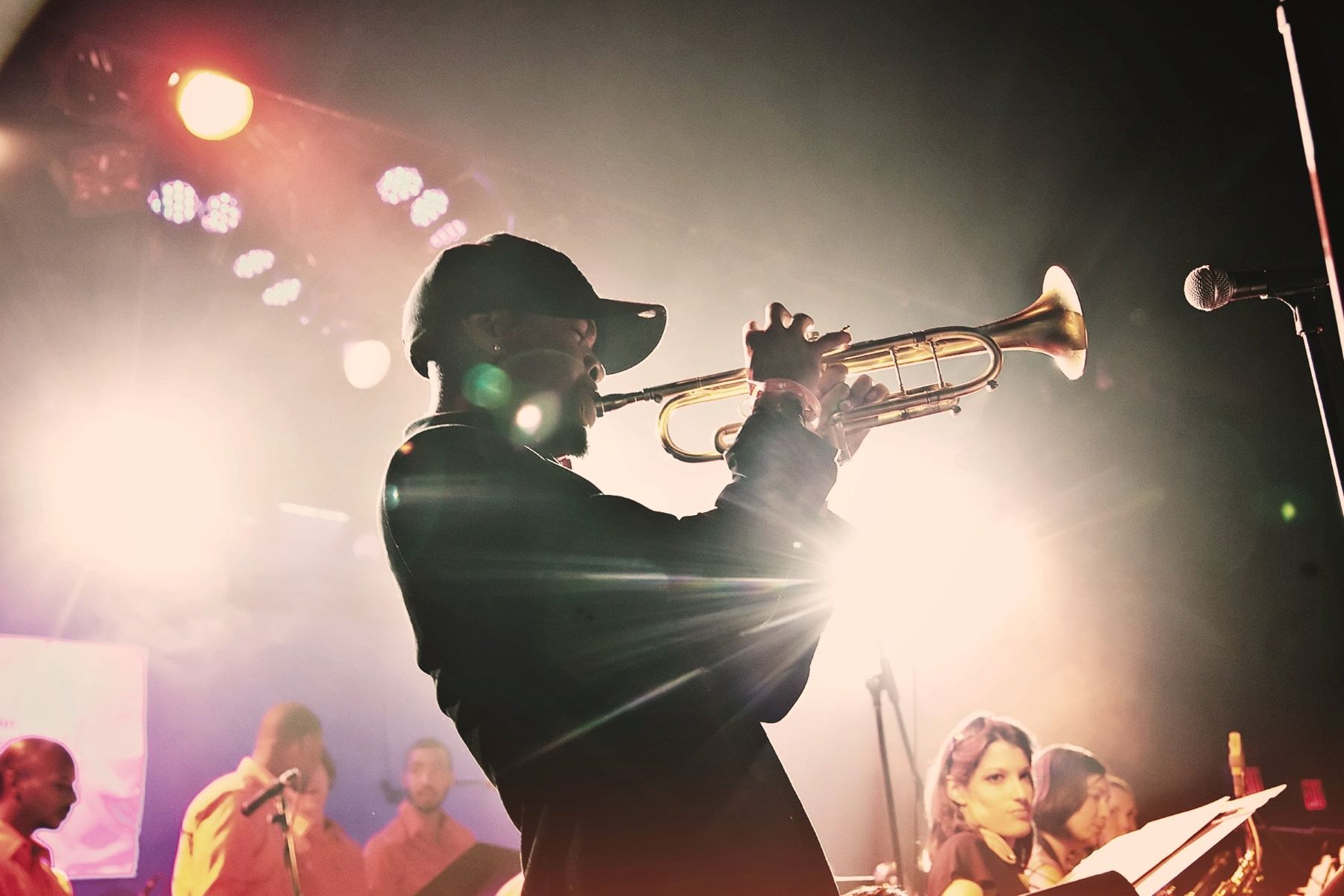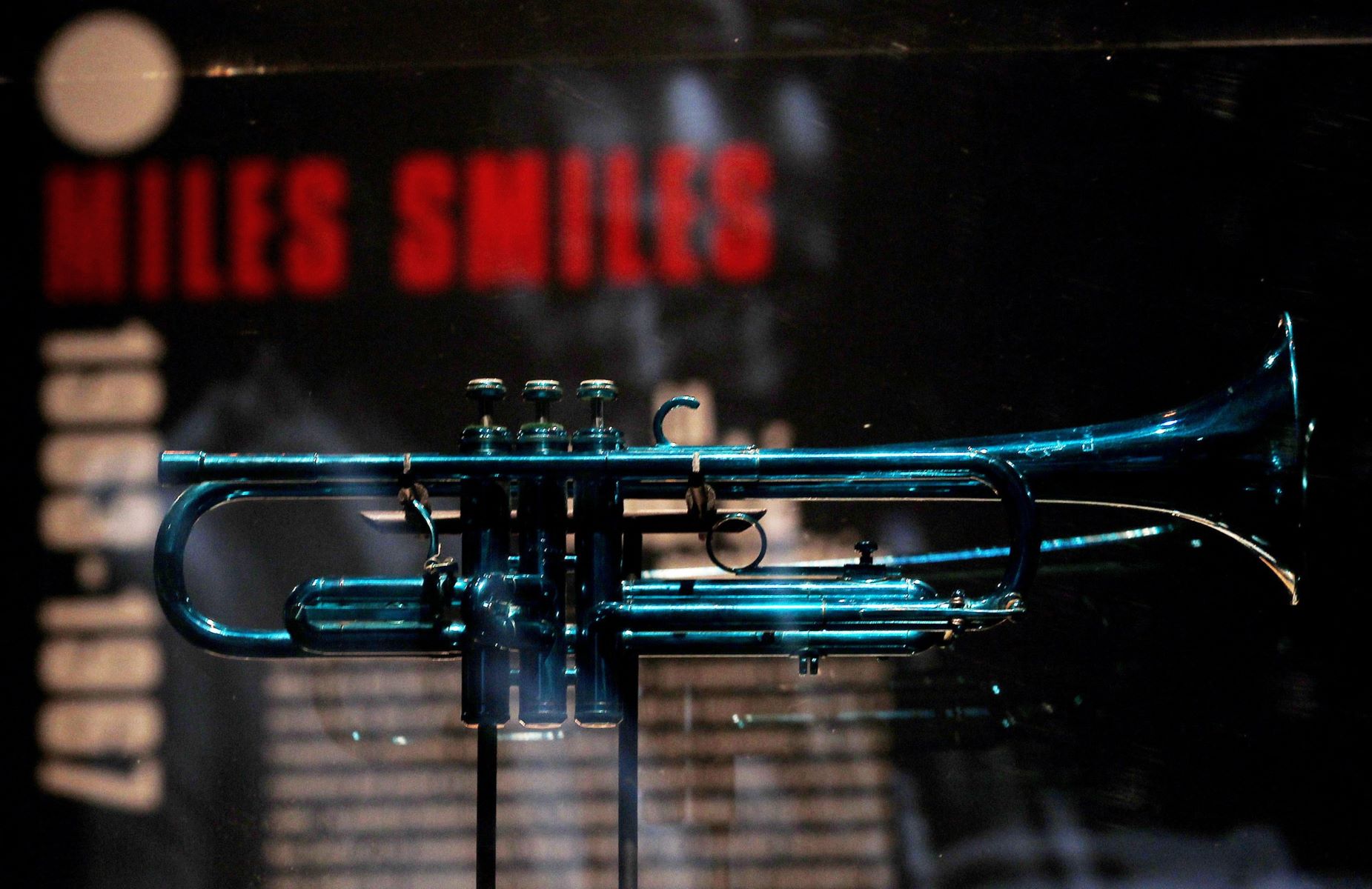

Jazz
How To Understand Jazz
Modified: January 22, 2024
Discover the enchanting world of jazz and gain a deeper understanding of its intricate melodies, harmonies, and improvisation techniques. Explore the origins, styles, and influential jazz musicians through this comprehensive guide.
(Many of the links in this article redirect to a specific reviewed product. Your purchase of these products through affiliate links helps to generate commission for AudioLover.com, at no extra cost. Learn more)
Table of Contents
Introduction
Jazz is a uniquely American art form that has captivated audiences for over a century. With its roots in African American communities in the late 19th and early 20th centuries, jazz has evolved and transformed, becoming a global phenomenon that continues to influence music to this day. Known for its improvisation, complex harmonies, and energetic rhythms, jazz is a genre that defies traditional musical boundaries.
What sets jazz apart is its ability to convey emotions through music, allowing musicians to express their individuality and creativity. Whether it’s the plaintive cry of a trumpet, the virtuosic melodies of a piano, or the swinging rhythm of a double bass, jazz has an unparalleled ability to evoke deep emotions and connect with listeners on a profound level.
Throughout its history, jazz has served as a musical and cultural melting pot, drawing influences from various musical traditions and giving rise to a multitude of styles and subgenres. From the big band sounds of the Swing Era to the cool sophistication of bebop, from the soulful strains of the blues to the avant-garde experimentation of free jazz, there is a jazz style to suit every taste.
In this article, we will take a closer look at the history of jazz, exploring its origins and development. We will delve into the key elements that define the genre, such as rhythm, harmony, and improvisation. We will also explore the different styles and subgenres of jazz and highlight some of the iconic artists who have shaped the genre over the years.
Whether you’re a seasoned jazz aficionado or just beginning your exploration of this rich and vibrant musical tradition, this article will provide you with a comprehensive understanding of jazz and equip you with the knowledge to appreciate and enjoy this remarkable art form.
History of Jazz
Jazz has a rich and fascinating history that stretches back over a century. Its roots can be traced to the African American communities in New Orleans in the late 19th and early 20th centuries, where a unique blend of African rhythms, European harmonies, and Caribbean influences converged to create a new and exciting style of music.
The early forms of jazz were born out of the cultural melting pot of New Orleans, where musicians from diverse backgrounds would come together and share their musical traditions. The city’s vibrant music scene, with its loud and lively brass bands, street parades, and dance halls, served as a breeding ground for the development of jazz.
One of the key figures in the early development of jazz was Buddy Bolden, an African American cornetist whose powerful and innovative playing style laid the foundation for the genre. While no recordings of Bolden exist, his impact on the music was profound, and he is often referred to as the “father of jazz.”
As jazz spread beyond New Orleans, it began to evolve and adapt to new surroundings and influences. In the 1920s, the era of Prohibition in the United States, jazz found a new home in speakeasies, underground clubs where alcohol was illegally served. This gave rise to the energetic and exuberant style known as the Roaring Twenties or the Jazz Age.
During this time, jazz became synonymous with the American cultural scene and found widespread popularity. Big bands, led by luminaries like Duke Ellington, Count Basie, and Benny Goodman, dominated the music landscape, filling dance halls and ballrooms with their swinging rhythms and catchy melodies.
The 1930s and 1940s saw the emergence of new jazz styles, such as bebop and cool jazz. Bebop, pioneered by artists like Charlie Parker and Dizzy Gillespie, introduced complex harmonies and fast-paced improvisation, challenging the traditional conventions of jazz. Meanwhile, cool jazz, associated with musicians like Miles Davis and Dave Brubeck, embraced a more laid-back and introspective sound.
In the second half of the 20th century, jazz continued to evolve and incorporate elements from other genres such as rock, funk, and world music. This gave rise to subgenres like fusion, free jazz, and acid jazz, pushing the boundaries of what jazz could be and attracting new audiences.
Today, jazz remains a vibrant and ever-evolving genre, with a rich tradition and a wide range of styles and subgenres. It continues to be celebrated for its innovation, improvisation, and emotional depth, and its influence can be heard in a variety of musical genres around the world.
Understanding the history of jazz provides context and appreciation for the many forms and styles that exist within the genre. It allows us to explore the cultural and social influences that shaped jazz and comprehend the significant contributions of the brilliant musicians who paved the way for its enduring legacy.
Elements of Jazz
Jazz is a genre that is characterized by several distinct elements, each contributing to its unique sound and style. These elements come together to create a dynamic and expressive form of music that is both captivating and engaging. Let’s explore some of the key elements that define jazz.
Rhythm and Syncopation: One of the defining features of jazz is its complex and syncopated rhythm. Jazz music often incorporates intricate rhythmic patterns, polyrhythms, and swung notes. The rhythm section, consisting of instruments such as drums, bass, and piano, plays a crucial role in driving the groove and providing a foundation for improvisation.
Harmony and Chord Progressions: Jazz employs sophisticated harmonies and chord progressions. Rather than relying on simple and predictable chord structures, jazz musicians use extended chords, altered chords, and chord substitutions to add complexity and color to their compositions. The harmonic language of jazz allows for intricate improvisation and adventurous musical exploration.
Improvisation: Perhaps one of the most celebrated aspects of jazz is its emphasis on improvisation. Jazz musicians are known for their ability to spontaneously create melodies, harmonies, and rhythms on the spot. This creative freedom allows for moments of individual expression and collective interplay, making each performance unique and unpredictable.
Call and Response: Another characteristic element of jazz is the call and response interaction between musicians. This technique involves one musician playing a phrase, and another musician or group of musicians responding with their own musical statement. Call and response adds a sense of dialogue and interaction to jazz performances, enhancing the improvisational nature of the music.
Blues Influence: The blues is deeply ingrained in the DNA of jazz. Many jazz compositions and improvisations draw upon the blues scale, incorporating its expressive and soulful qualities. The blues influence can be heard in the melodies, harmonies, and overall emotional depth of jazz music.
Swing Feel: Swing is a distinctive rhythmic feel that emerged in the early Swing Era of jazz. It involves a relaxed and buoyant groove characterized by a forward-moving, lilted rhythm. The swing feel is essential in genres like big band jazz and is often associated with a sense of joy and infectious energy.
Understanding the elements of jazz provides a foundation for appreciating and comprehending the music’s complexities. It allows listeners to grasp the technical and artistic aspects that contribute to the genre’s allure. Whether it’s the intricate rhythms, daring improvisations, or soul-stirring harmonies, these elements come together to create the vibrant and captivating art form that is jazz.
Rhythm and Syncopation
Rhythm and syncopation are fundamental elements of jazz that give the music its distinctive character and energy. From the swinging rhythms of big band jazz to the complex polyrhythms of bebop, rhythm and syncopation play a crucial role in shaping the sound of the genre.
In jazz, rhythm serves as the driving force behind the music, providing a foundation for musical expression and improvisation. The rhythm section, typically comprised of drums, bass, and piano, lays down the groove and establishes the pulse of the music. The drummer sets the rhythmic framework with various rhythms and beats, while the bassist and pianist provide harmonic and rhythmic support by accenting beats and playing patterns that complement the overall rhythm.
Syncopation is a defining feature of jazz rhythm. It refers to the intentional displacement of accents or stresses on normally weak beats or off-beats, creating a sense of rhythmic tension and excitement. By placing emphasis on unexpected notes or incorporating unexpected pauses, syncopation adds a sense of unpredictability and swing to jazz music.
Jazz musicians often use syncopation to create intricate rhythmic patterns that push the boundaries of traditional music. This can be heard in the complex rhythms played by drummers like Buddy Rich and Art Blakey, who employ rapid and intricate syncopated patterns to drive the music forward. The use of syncopation allows jazz musicians to create a sense of forward momentum, improvisational freedom, and a distinctive sense of swing.
Polyrhythms are another aspect of jazz rhythm. They involve the simultaneous use of multiple rhythmic patterns or meters, creating a layered and complex rhythmic texture. This technique can be heard in the music of pianist Thelonious Monk, who often incorporated polyrhythms into his compositions, creating a unique and innovative sound.
Jazz also embraces the concept of swing, a rhythmic feel associated with early jazz and big band music. Swing involves a relaxed and propulsive rhythm where notes are played slightly behind the beat, giving the music a lively and infectious groove. This swing feel can be heard in the music of iconic jazz figures such as Duke Ellington, Count Basie, and Louis Armstrong.
Understanding rhythm and syncopation is essential to appreciating the dynamic and captivating nature of jazz music. This mastery of rhythm allows jazz musicians to create intricate and layered compositions, engaging in spontaneous conversations through improvisation. Whether it’s the driving pulse of a drum solo, the syncopated melodies of a horn section, or the rhythmic interplay between musicians, rhythm and syncopation are at the heart of what makes jazz such an exhilarating and unique musical genre.
Harmony and Chord Progressions
Harmony and chord progressions are essential elements of jazz that contribute to its rich and complex sound. Unlike some other genres of music, jazz often incorporates intricate and sophisticated harmonies, pushing the boundaries of traditional harmonic conventions.
Jazz harmonies are characterized by their use of extended chords, altered chords, and chord substitutions. Rather than relying solely on basic triads, jazz musicians often employ seventh chords, ninth chords, eleventh chords, and beyond. These extended chords add color and depth to the music, creating a harmonic palette that allows for greater expressiveness and improvisation.
Altered chords are another hallmark of jazz harmony. These chords involve the modification, or alteration, of certain notes within a chord, creating tension and adding harmonic interest. For example, in a dominant chord, notes such as the ninth, eleventh, and thirteenth may be altered to create a more dissonant and bluesy sound.
Chord progressions in jazz are often more complex and adventurous than those found in traditional Western classical music or pop music. Jazz standards frequently feature chord progressions that move through multiple key centers or modulate to unexpected harmonies. These progressions provide fertile ground for improvisation and allow musicians to explore a wide range of melodic and harmonic possibilities.
One common chord progression in jazz is the ii-V-I progression. This progression consists of a minor seventh chord (ii), followed by a dominant seventh chord (V), and resolves to a major seventh chord (I). The ii-V-I progression serves as a foundation for improvisation and is a staple in many jazz compositions.
Chord substitutions are another important aspect of jazz harmony. Musicians may choose to replace a chord with a substitute that shares similar harmonic properties. These substitutions can add harmonic interest, create tension, or provide a fresh perspective on a familiar progression. Jazz musicians often experiment with various chord substitutions to add their own personal flavor to a composition or arrangement.
Understanding jazz harmony and chord progressions is crucial for both musicians and listeners. It allows musicians to navigate the complex harmonic landscape of jazz and provides a framework for improvisation and composition. For the listener, appreciating the intricate harmonies and chord progressions enhances their understanding and enjoyment of the genre, providing insight into the depth and sophistication of jazz music.
Improvisation
One of the defining characteristics of jazz is the art of improvisation. Improvisation is the spontaneous creation of melodies, harmonies, and rhythms in real-time, often during a performance. It is a central element of jazz that sets it apart from other musical genres, allowing musicians to express their individuality and creativity.
In jazz, improvisation is a collaborative process that involves both soloists and the rhythm section. While the soloist takes the spotlight and creates improvisations, the rhythm section provides support and responds to the soloist, creating a musical conversation. This interaction between musicians is known as call and response, where a soloist plays a phrase, and others respond with their own musical statements.
Improvisation in jazz is fueled by a deep understanding of music theory and harmonic structures. Musicians need to have a solid foundation in scales, chord progressions, and harmonic relationships to navigate the complex harmonic landscape of jazz. This knowledge allows them to make informed decisions about which notes and harmonies to play, creating melodic and rhythmic ideas that fit within the context of the music.
Jazz improvisation is not limited to playing pre-determined melodies or solos. It is about spontaneous creativity and taking risks. Musicians have the freedom to experiment with different scales, modes, chromaticism, and rhythmic patterns to create unique and innovative improvisations. This aspect of jazz allows for endless possibilities and ensures that each performance is a one-of-a-kind experience.
Great jazz improvisers have a distinct musical voice and a signature style. Their improvisations reflect their personalities, experiences, and emotions. Improvisation allows musicians to express themselves in a way that goes beyond written music, connecting directly with the audience on an emotional level.
Improvisation is not only reserved for soloists; it is also present in ensemble playing. Jazz musicians often engage in collective improvisation, where everyone in the band contributes to the creation of the music simultaneously. This collaborative improvisation adds to the dynamic and interactive nature of jazz performances.
Improvisation is a skill that can be developed and honed through practice, listening, and studying the works of influential jazz musicians. Jazz education often includes exercises in ear training, transcribing solos, and learning jazz standards to develop improvisational skills. By immersing oneself in the language and vocabulary of jazz, musicians can develop the ability to think and express themselves spontaneously in a jazz context.
Improvisation is at the heart of jazz, making it a living and evolving art form. It is a thrilling and expressive aspect of jazz that allows musicians to push the boundaries of music, create unique moments, and connect with audiences in a deeply personal way.
Jazz Styles and Subgenres
Jazz is a genre that encompasses a vast array of styles and subgenres, each with its own distinct characteristics and influences. From the swinging sounds of big band and the intricate melodies of bebop to the soulful strains of the blues and the experimental freedom of free jazz, there is a jazz style to suit every mood and preference.
- Swing: Originating in the 1920s and 1930s, swing is characterized by a strong rhythmic feel, syncopated melodies, and arrangements for larger ensembles. It became the dominant form of jazz during the Swing Era, with iconic figures like Duke Ellington, Count Basie, and Benny Goodman leading influential big bands.
- Bebop: Emerging in the 1940s, bebop focused on fast tempos, complex harmonies, and intricate improvisations. Musicians like Charlie Parker, Dizzy Gillespie, and Thelonious Monk spearheaded this movement, pushing the boundaries of jazz with their virtuosic playing and innovative compositions.
- Cool Jazz: A reaction to the intensity of bebop, cool jazz emerged in the 1950s with a more laid-back and introspective sound. Artists like Miles Davis and Dave Brubeck explored relaxed tempos, melodic improvisation, and sophisticated harmonies, often incorporating elements of classical music into their compositions.
- Hard Bop: Building on the foundations of bebop, hard bop infused the music with elements of rhythm and blues, gospel, and soul. Artists like Art Blakey, Horace Silver, and Lee Morgan embraced a more energetic and soulful approach, incorporating bluesy riffs, catchy melodies, and improvisational fire.
- Modal Jazz: Popularized by Miles Davis’ album “Kind of Blue,” modal jazz emphasized improvisation over traditional chord progressions. It utilized fewer chords and focused on a single scale or mode, providing a platform for extended and exploratory solos.
- Free Jazz: In the late 1950s and 1960s, free jazz emerged as a radical departure from conventional jazz. Artists like Ornette Coleman and John Coltrane embraced free improvisation, exploring non-traditional structures, atonalities, and extended techniques, breaking down the barriers of traditional harmony and form.
- Fusion: Fusion emerged in the late 1960s and 1970s, combining jazz with elements of rock, funk, and other genres. Musicians like Miles Davis, Weather Report, and Herbie Hancock incorporated electric instruments, electronic effects, and complex rhythms to create a fusion of styles and sounds.
- Contemporary Jazz: Contemporary jazz encompasses a wide range of styles that have emerged from the late 20th century to the present. It includes genres like smooth jazz, acid jazz, and jazz-funk, incorporating elements of pop, R&B, electronica, and world music.
These are just a few examples of the diverse jazz styles and subgenres that have evolved over the years. Each style brings its own unique flavor and artistic expression to the jazz tradition, reflecting the ever-evolving nature of the genre. Exploring the different jazz styles allows for a deeper appreciation of the immense creativity and flexibility of jazz as a genre.
Famous Jazz Artists and their Contributions
Jazz has been shaped and defined by numerous influential artists who have left an indelible mark on the genre. From the pioneers of early jazz to the innovators of modern jazz, these musicians have contributed their unique talents and creative visions, pushing the boundaries of what jazz can be. Let’s explore some of the famous jazz artists and their monumental contributions to the world of music.
- Louis Armstrong: Known as “Satchmo,” Louis Armstrong was one of the early pioneers of jazz. His innovative trumpet playing, distinctive voice, and improvisational skills set new standards for jazz musicians. Armstrong’s recordings, such as “West End Blues” and “What a Wonderful World,” continue to be celebrated for their timeless beauty.
- Duke Ellington: Duke Ellington was a prolific composer, bandleader, and pianist who played a major role in the development of big band jazz. His compositions, such as “Take the A Train” and “Mood Indigo,” showcased his sophisticated arrangements and unparalleled musical vision, solidifying his status as a jazz legend.
- Charlie Parker: Known as “Bird,” Charlie Parker was a central figure in the bebop movement. His innovative alto saxophone playing and complex improvisations revolutionized jazz. Parker’s compositions, including “Confirmation” and “Now’s the Time,” continue to inspire generations of musicians.
- Miles Davis: Miles Davis was not only a virtuoso trumpeter but also an influential bandleader and composer. Davis continually reinvented himself throughout his career, from cool jazz to modal jazz to fusion. Albums like “Kind of Blue” and “Bitches Brew” are considered masterpieces and have had a profound impact on the direction of jazz.
- John Coltrane: John Coltrane was a gifted saxophonist and composer who pushed the boundaries of jazz with his avant-garde approach. His album “A Love Supreme” is regarded as one of the most important jazz recordings of all time, showcasing his spiritual and exploratory musical style.
- Ella Fitzgerald: Known as the “First Lady of Song,” Ella Fitzgerald was a remarkable jazz vocalist whose impeccable technique and unmatched improvisational skills set her apart. Fitzgerald’s interpretations of the Great American Songbook, such as her scat improvisations on “How High the Moon,” remain legendary.
- Thelonious Monk: Thelonious Monk was an innovative pianist and composer known for his unique playing style and unconventional compositions. Monk’s compositions, including “Round Midnight” and “Straight, No Chaser,” challenged traditional harmonic structures and remain celebrated for their originality and complexity.
- Sarah Vaughan: Sarah Vaughan, often referred to as “The Divine One,” was a sublime jazz vocalist with a remarkable vocal range and expressive phrasing. Her renditions of standards like “Misty” and “Lullaby of Birdland” showcase her unparalleled musicality and versatility.
These are just a few of the iconic jazz artists who have made significant contributions to the genre. Their unique talents, artistic visions, and groundbreaking innovations have helped shape the course of jazz history, inspiring and influencing countless musicians and listeners alike.
Exploring the works of these legendary jazz artists not only provides a glimpse into the evolution of jazz but also serves as a testament to the enduring power and beauty of this remarkable art form.
Listening to Jazz: Developing an Ear for Jazz
Listening to jazz is an immersive experience that can transport you to a world of rich harmonies, expressive melodies, and captivating rhythms. Whether you’re new to the genre or a seasoned jazz enthusiast, developing an ear for jazz can enhance your appreciation and understanding of this unique art form. Here are some tips to help you deepen your connection with jazz music:
- Start with the classics: Begin your journey by exploring the works of the legendary jazz artists who have shaped the genre. Artists like Louis Armstrong, Duke Ellington, and Charlie Parker have left an indelible mark on jazz history. Listen to their iconic recordings to familiarize yourself with the foundations of jazz and to understand the evolution of the genre.
- Explore different styles and eras: Jazz encompasses a diverse range of styles and eras, each with its own unique characteristics and influences. Take the time to explore different jazz styles such as swing, bebop, cool jazz, and fusion. Listen to different eras, from the early roots of jazz to contemporary interpretations. This will expose you to a variety of sounds and help you develop a broader perspective on the genre.
- Focus on the nuances: Pay attention to the intricate details of jazz recordings. Listen to the interplay between the instruments, the improvisations, and the rhythmic nuances. Notice how the musicians interact with one another and respond to each other’s musical ideas. This level of attentiveness will allow you to appreciate the complexity and skill involved in jazz performance.
- Transcribe and analyze solos: Transcribing and analyzing solos is an excellent way to develop your ear for jazz. Choose solos from your favorite jazz recordings and learn to play them on your instrument. This exercise will help you understand the language of jazz improvisation, the use of scales and chords, and the rhythmic subtleties of jazz phrasing.
- Attend live performances: Listening to jazz live is a transformative experience. Seek out local jazz clubs, festivals, or concerts and immerse yourself in the energy and spontaneity of a live performance. Watch the interactions between the musicians and the audience, and observe how the music comes to life on stage. Being present at a live concert allows you to fully appreciate the improvisational nature of jazz.
- Engage with jazz communities: Join online forums, social media groups, or local jazz societies to connect with fellow jazz enthusiasts. Engage in discussions, share recommendations, and seek guidance from experienced listeners. This sense of community will provide a supportive environment for learning and discovering new perspectives on jazz.
Listening to jazz is a personal and subjective experience, so trust your instincts and explore what resonates with you. Allow yourself the freedom to explore different artists, styles, and interpretations of jazz. The more you listen, the more your ear will develop, enabling you to discern the nuances and appreciate the beauty of this extraordinary musical genre.
Remember, there are no right or wrong ways to listen to jazz. What matters most is your genuine enjoyment and connection with the music. So, open your ears, embrace the improvisational spirit, and let the magic of jazz transport you to new musical horizons.
Conclusion
Jazz is a genre that encapsulates passion, creativity, and innovation. It has a rich and diverse history that spans over a century, evolving and adapting to reflect the cultural and social landscape of different eras. From the early roots of New Orleans jazz to the avant-garde experimentation of free jazz, jazz has continually pushed the boundaries of what is musically possible.
Understanding jazz means delving into its key elements, such as rhythm, syncopation, harmony, and improvisation. It means exploring the various styles and subgenres that have emerged throughout its history, each contributing its own unique flavor to the jazz tradition.
Appreciating jazz involves deep listening and developing an ear for the intricacies of the music. It means immersing oneself in the recordings of influential jazz artists and experiencing the power and beauty of jazz through live performances. It means engaging with the vibrant jazz communities that exist online and in local venues, sharing insights and expanding one’s understanding of the genre.
Jazz is a dynamic and living art form, continuously evolving and reinventing itself. It has touched countless lives, crossing cultural and geographical boundaries to inspire musicians and captivate audiences around the world. Whether it’s the exuberant energy of swing, the introspective melodies of cool jazz, or the boundary-pushing experimentation of free jazz, there is a jazz style that resonates with each person’s unique musical sensibilities.
By exploring the history, elements, and diverse subgenres of jazz, one can develop a deeper appreciation for the immense talent, creativity, and innovation of jazz musicians throughout the decades. Jazz has left an indelible mark on the music landscape, influencing countless genres and serving as a powerful mode of artistic expression.
So, whether you’re a seasoned jazz enthusiast or just beginning your journey into the world of jazz, embrace the spirit of exploration, immerse yourself in the music, and let the rhythms and melodies of jazz transport you to a world of endless possibilities.
Remember, jazz is not just a genre; it’s a state of mind. It invites you to embrace improvisation, take risks, and express yourself authentically. So, go ahead, dive into the world of jazz, and let the music guide and inspire you on your own unique jazz journey.


